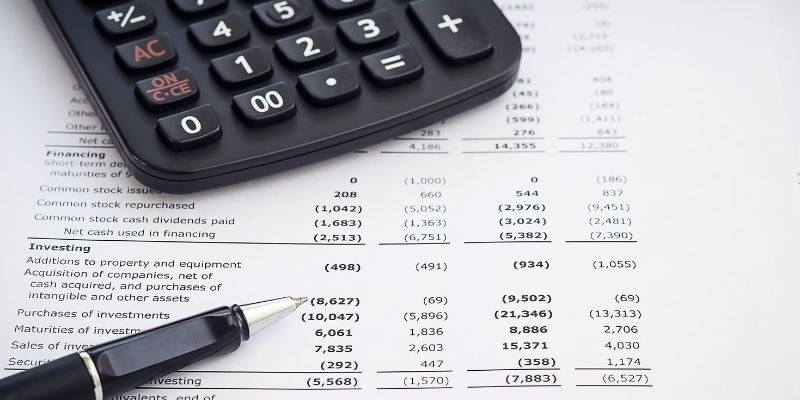As businesses expand their reach, the amount of data they generate also increases exponentially. Data analysis techniques help businesses make sense of all the numbers and statistics to derive meaningful insights that can drive growth and revenue.
In this blog, we will delve into the world of data analysis techniques- from regression analysis to time series analysis, correspondence analysis to multidimensional scaling (MDS).
We will explore various approaches that can be used for analyzing data, both qualitative and quantitative, using tools like SAS and Tableau.
So buckle up as we explore how these advanced data analysis techniques can help you gain valuable business insights that can take your organization to new heights.
What are Data Analysis Techniques?
Data Analysis Techniques refer to various methods used to analyze and interpret data, allowing businesses to extract valuable insights and identify patterns and trends.
These techniques include regression analysis, time series analysis, clustering analysis, and machine learning algorithms. Choosing the right technique depends on the nature of the data and the specific business question at hand.
Importance of Data Analysis Techniques
In today’s fast-paced world of big data and machine learning algorithms, mastering various data analysis techniques is crucial to success. Understanding what these methods are and how they work is a first step toward using them effectively.
Whether you’re performing regression analysis or using other statistical techniques like factor analysis or clustering to analyze your dataset or working with unstructured datasets like social media or healthcare records, data analytics offer numerous benefits for decision-making. With prescriptive and predictive analytics tools like Power BI or Tableau software at your disposal, you can gain insights into your data that would have been impossible just a few years ago.
Regression Analysis for Data Analysis Techniques
Regression analysis is an important statistical technique used to explore relationships between variables in a dataset.
By understanding the impact of one variable on another, businesses can make data-driven decisions that lead to better outcomes. Regression analysis is just one of many data analysis methods available to data analysts, and it plays a crucial role in the broader field of data science.
Used alongside other techniques like clustering, machine learning algorithms, and descriptive analysis, regression analysis forms part of a powerful toolkit for analyzing big datasets and extracting useful information from them.
What is Regression Analysis?
Regression analysis is a statistical tool that assesses the connection between two or more variables. It determines the strength of the relationship and forecasts future outcomes using collected data.
Depending on the data’s nature, it can be used for linear or nonlinear models by fitting a line or curve. It’s crucial for businesses to evaluate customer behavior, sales trends, and other significant metrics.
Analytics for Data Analysis Techniques
Businesses can explore relationships between variables using regression analysis while conducting analytics for data analysis techniques.
This method is complemented by other analytical tools like predictive modeling techniques to forecast future outcomes and A/B testing approaches to compare the effectiveness of different strategies.
Incorporating machine learning algorithms automates the process of analyzing raw data while sentiment analysis gives insights into customer behavior. Additional tools like data visualization and clustering can also unearth hidden connections within datasets.
Analyzing Data with Analytics
Data analysis techniques are crucial for businesses looking to gain valuable insights from their data set. To analyze data with analytics, one must leverage useful tools such as data visualization tools and predictive modeling techniques.
Conducting A/B testing is also a great way to compare different strategies’ effectiveness. Moreover, applying machine learning algorithms for automated data analysis and incorporating sentiment analysis can provide deeper insights into customer behavior and preferences.
These methods ensure that businesses make informed decisions based on useful information generated through the data analysis process.
Algorithms for Data Analysis Techniques

Analyzing sets of raw data often requires the use of various statistical analysis tools, including different algorithms.
Regression analysis identifies relationships between variables, clustering groups similar points, decision trees graphically display outcomes of choices, and neural networks detect patterns in big datasets.
By identifying correlations and patterns in vast amounts of unstructured or structured data using association rule mining, businesses can gain useful insights into customers’ preferences, habits, and behavior. Analyzing your dataset with machine learning models like artificial intelligence or prescriptive analysis methods can give you useful information for better decision-making.
Using Algorithms in Data Analysis Techniques
Algorithms play a crucial role in Data Analysis Techniques as they provide sets of rules and instructions for computers to process data effectively.
Regression analysis is one commonly used algorithm that helps identify relationships between variables in a dataset. Clustering is another technique that groups similar data points together.
Decision trees provide graphical representations of decisions and their possible outcomes while neural networks help identify patterns in complex datasets.
Association rule mining identifies correlations and patterns in large datasets. Choosing the right algorithm depends on factors like the type of data, research question being asked, and desired outcome for better decision-making.
Graphs for Data Analysis Techniques
Visualization plays an important role in Data Analysis Techniques. Various types of graph such as line graphs, scatter plots, bar graphs etc. help researchers in drawing insights from complex data sets.
When analyzing large amounts of numerical data, line graphs are preferred as they can help track changes over time or compare two variables.
On the other hand, bar graphs are useful when comparing values across categories; while pie charts work well when depicting proportions. It’s crucial that the right graph is chosen to ensure accurate results and insights during the Data Analysis Techniques process.

How to Use Graphs in Data Analysis Techniques
To effectively use graphs in data analysis techniques, it is crucial to select the appropriate graph type depending on your dataset’s nature and insights you want to gain from it. Graphs are a powerful tool for quantitative analysis as they help visualize trends, patterns, and outliers within a dataset.
Popular graph types include line graphs, scatter plots, pie charts, bar graphs, and more. It’s important to label axes properly while selecting suitable scales for accurate representation of numerical data points.
Dispersion in Data Analysis Techniques
Dispersion in Data Analysis Techniques involves measuring the variability of data points from the mean. This step is essential for identifying outliers and patterns within a dataset, making it a crucial part of the overall data analysis process.
There are various methods for measuring dispersion, including range, standard deviation, and variance.
By visualizing dispersion through box plots and scatterplots, a deeper understanding of complex datasets can be achieved. For data analysts looking to make better decisions based on historical data or big data sets, understanding dispersion is a critical first step toward deeper statistical analysis.

Understanding Dispersion in Data Analysis Techniques
Dispersion in data analysis techniques refers to the spread or variability of data points in a dataset. Common measures of dispersion include range, variance, and standard deviation.
Through understanding dispersion, one can identify outliers and assess the reliability of statistical analyses which makes it an essential part of any data analysis process.
A high degree of dispersion indicates large variability in the dataset while a low degree suggests consistency. To visualize and analyze dispersion in data, one can use various tools like box plots and scatter plots along with other techniques like regression analysis, factor analysis, cluster analysis etc..
Python in Data Analysis Techniques
Python has become a vital tool in the field of data analysis techniques. Its comprehensive libraries and tools enable data analysts to perform complex operations such as data cleaning, transformation, and visualization with ease. Moreover, Python’s incorporation of machine learning capabilities enables businesses to gain valuable insights from big data. By mastering Python’s data analysis methods, businesses can uncover hidden patterns and trends in their dataset for more informed decision-making processes. Data analysts should consider this as a crucial step in the overall process of statistical analysis.
Using Python for Data Analysis Techniques
Python has become the go-to language for Data Analysis Techniques due to its ease of use and vast libraries.
Analysts can use it to perform an array of tasks such as cleaning, visualizing, manipulating, and machine learning on their datasets.
Pandas is one of the most commonly used libraries in Python when it comes to data analysis, which provides user-friendly structures and toolsets for working with tabular data.
Moreover, Numpy is another widely popular library used for numerical analysis and scientific computing while Matplotlib allows creating an extensive range of graphs and charts effortlessly. By mastering data analysis techniques using Python, businesses can get insightful information from raw unstructured data sets without breaking a sweat.
Tableau for Data Analysis Techniques
Data analysts can leverage Tableau for analyzing big data using its drag-and-drop interface that makes it possible to develop interactive dashboards from large volumes of structured and unstructured data.
Its advanced features like calculated fields, blending, and mapping enable regression analysis, predictive analytics, cohort analysis, and other types of analysis on various types of data sets. These analyses lead to useful information that can inform decision-making by businesses.

Using Tableau Software for Data Analysis Techniques
Unlocking insights from complex datasets has never been easier with Tableau software for data analysis techniques.
By utilizing its intuitive drag-and-drop interface, you can connect to various data sources and create interactive dashboards with charts, graphs, and other visualization tools. Incorporating predictive analytics and machine learning algorithms allows you to identify new opportunities while highlighting trends and patterns in your dataset. Gain an edge in decision-making by leveraging the power of Tableau software.
SAS for Data Analysis Techniques
SAS is a vital tool in the field of Data Analysis Techniques. The software offers extensive capabilities for managing and processing large data sets while identifying hidden patterns using statistical techniques such as regression analysis, factor analysis, and descriptive analysis. SAS’s advanced visualization features allow users to create graphs and charts that display numerical information effectively.
Furthermore, SAS has customized programming languages that offer prescriptive and predictive analyses through machine learning algorithms like clustering, classification, decision trees, logistic regression, among others.

Using SAS in Data Analysis Techniques
Incorporating various data analysis techniques like regression analysis, factor analysis or clustering is essential to gain insights from large datasets efficiently.
If we take SAS programming language into account for data analysis techniques then it offers advanced visualization capabilities to present complex data in an easy-to-understand manner. Customization of analyses with automated reporting tools provides useful information from raw data points.
The analytic tools help to deal with unstructured data sets by performing diagnostic or predictive analysis aided by prescriptive analytics or machine learning algorithms.
Qualitative Methods in Data Analysis Techniques
Understanding customer behavior and preferences is crucial for any business looking to make informed decisions using Data Analysis Techniques. One way of achieving this is by analyzing non-numerical data using qualitative methods.
Such techniques involve analyzing various forms of unstructured data like text or audio recordings to extract useful information that can aid in decision-making.
By employing methods such as content analysis or discourse analysis on qualitative data sets businesses can uncover hidden patterns that wouldn’t have been visible through quantitative analyses alone.

Analyzing Qualitative Data with Data Analysis Techniques
To gain deeper insights into non-numerical datasets like customer feedback or employee opinions, it is important to analyze them using various data analysis techniques.
One such technique is analyzing qualitative data with data analysis methods like content or thematic analysis. While content analysis involves categorizing and coding textual content to identify themes, thematic analysis identifies patterns of meaning within qualitative data by examining underlying themes and concepts.
By adopting these techniques, analysts can uncover useful information that may not be immediately apparent in quantitative data.
Quantitative Methods in Data Analysis Techniques
Analyzing a dataset using quantitative methods is an essential part of data analysis techniques. These methods include statistical analysis, regression analysis, and factor analysis.
Regression analysis allows a data analyst to gain insight into the relationship between dependent and independent variables within a given data set. Factor analysis helps identify underlying factors that explain observed patterns in data sets.
Employing quantitative methods can help organizations analyze big data sets more efficiently and make informed decisions.

Analyzing Quantitative Data with Data Analysis Techniques
To draw valuable insights from a quantitative dataset while performing data analysis techniques, you must use appropriate analytical methods.
The first step includes ensuring the accuracy and reliability of your dataset. Afterward, you can choose different types of analytics like regression analysis or clustering to identify trends in your data.
Statistical analysis like hypothesis testing or correlation helps you understand numerical data better. Finally, predictive and prescriptive analytics provide useful information for decision-making from all kinds of quantitative datasets.
Time Series Analysis in Data Analysis Techniques
Time series analysis is a significant aspect of data analysis techniques that aids in identifying trends and patterns over time. This type of analysis is essential for businesses as it provides valuable insights into forecasting future trends and making informed decisions.
There are various techniques used for time series analysis such as moving averages, exponential smoothing, and ARIMA models that help in analyzing historical data by smoothing out irregularities to identify patterns.
To apply these techniques effectively, having a clear research question and hypothesis is crucial along with ensuring the accuracy and reliability of data collected using appropriate methods.
Using Time Series Analysis for Data Analysis Techniques
Time series analysis is a statistical technique that involves analyzing data points collected over time. This approach enables the identification of trends, seasonality, and other patterns in the dataset.
Using this information, businesses can forecast future values based on historical trends and patterns. Time series models are commonly used in sales forecasting and inventory management applications in business intelligence. A deep understanding of statistical modeling techniques and software tools is crucial when utilizing this method effectively.
Correspondence Analysis in Data Analysis Techniques
Correspondence analysis is a popular technique used by data analysts to identify patterns and relationships in large datasets.
This powerful tool helps visualize the relationships between categorical variables and provides important insights into customer behavior, preferences, and needs.
Companies can use correspondence analysis to segment markets, position products effectively, and make data-driven decisions based on their findings. With its ability to analyze complex datasets and reveal hidden connections within them, correspondence analysis is one of the most useful tools in a data analyst’s arsenal.
What is Correspondence Analysis and Its Importance in Data Analysis Techniques?
Correspondence Analysis is a statistical method that examines links between categorical variables. It can reveal data patterns and relationships that are not immediately apparent, particularly in market research and consumer behavior analysis. It helps businesses discover trends and preferences among different groups of consumers, as well as areas for improvement or growth.
Multidimensional Scaling (MDS) in Data Analysis Techniques
Multidimensional Scaling (MDS) is an effective statistical technique that helps in analyzing the similarities or dissimilarities between various objects.
This technique makes it easier to visualize complex datasets in a lower-dimensional space. As a result, businesses can explore relationships between various factors such as customers, products, and brands.
There are two types of MDS techniques: metric and non-metric, which provide significant insights into customer preferences and behavior. By using these insights, businesses can inform their marketing strategies and make informed product development decisions.

Choosing the Right Data Analysis Tool
Frequently Asked Questions
What are some advanced data analysis techniques that can be used in business?
Businesses can use regression analysis to predict outcomes and identify variable relationships, cluster analysis to group data for deeper analysis, data mining to uncover hidden patterns in large datasets, and time series analysis to forecast future trends. These advanced techniques help businesses make informed decisions based on data-driven insights.
How can data visualization tools help with analyzing business data?
Data visualization tools simplify complex business data, highlighting patterns and trends that may be overlooked in raw data. They help identify outliers and present information in a visually appealing way, making it easier to communicate findings with stakeholders.
Conclusion
In conclusion, mastering data analysis techniques can provide you with insights that can help your business succeed. With the right tools and techniques, you can easily navigate through large sets of data to uncover hidden patterns, trends, and correlations. It can help you make better business decisions, identify new opportunities, and improve your overall performance. But data analysis is not a one-size-fits-all approach. You need to choose the right tool for the job. That’s why we’ve created a comprehensive guide on advanced approaches for data analysis techniques. Download it now to learn more about how to master the art of data analysis.



